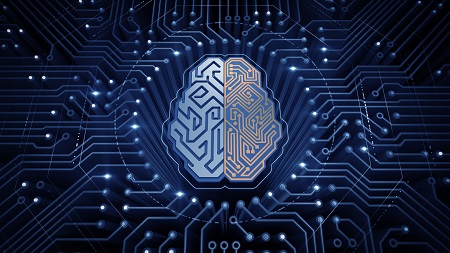
English | MP4 | AVC 1280×720 | AAC 44KHz 2ch | 3h 24m | 366 MB
This course covers the important differences between various canonical problems in machine learning, as well as the considerations in choosing the right solution techniques, based on the specifics of the problem you are trying to solve and the data that you have available.
As Machine Learning explodes in popularity, it is becoming ever more important to know precisely how to frame a machine learning model in a manner appropriate to the problem we are trying to solve, and the data that we have available. In this course, Designing a Machine Learning Model you will gain the ability to appropriately frame your use-case and then choose the right solution technique to model it. First, you will learn how rule-based systems and ML systems differ and how traditional and deep learning models work. Next, you will discover how supervised, unsupervised, and reinforcement learning techniques differ from each other. You will learn how classic supervised learning techniques such as regression and classification complement classic unsupervised techniques such as clustering and dimensionality reduction. You will then understand the assumptions and outcomes of these four classes of techniques and how solutions can be evaluated. Finally, you will round out your knowledge by designing end-to-end ML workflows for canonical ML problems, ensemble learning, and neural networks. When you’re finished with this course, you will have the skills and knowledge to identify the correct machine learning problem setup, and the appropriate solution technique for your use-case.
Table of Contents
Course Overview
1 Course Overview
Exploring Approaches to Machine Learning
2 Module Overview
3 Prerequisites and Course Outline
4 A Case Study – Sentiment Analysis
5 Sentiment Analysis as a Binary Classification Problem
6 Rule Based vs. ML Based Analysis
7 Traditional Machine Learning Systems
8 Representation Machine Learning Systems
9 Deep Learning and Neural Networks
10 Traditional ML vs. Deep Learning
11 Traditional ML Algorithms and Neural Network Design
12 Module Summary
Choosing the Right Machine Learning Problem
13 Module Overview
14 Choosing the Right Machine Learning Problem
15 Supervised and Unsupervised Learning
16 Reinforcement Learning
17 Recommendation Systems
18 Module Summary
Choosing the Right Machine Learning Solution
19 Module Overview
20 Regression Models
21 Choosing Regression Algorithms
22 Evaluating Regression Models
23 Types of Classification
24 Choosing Classification Algorithms
25 Evaluating Classifiers
26 Clustering Models
27 The Curse of Dimensionality
28 Dimensionality Reduction Techniques
29 Module Summary
Building Simple Machine Learning Solutions
30 Module Overview
31 Install and Set Up
32 Exploring the Regression Dataset
33 Simple Regression Using Analytical and Machine Learning Techniques
34 Multiple Regression Using Analytical and Machine Learning Techniques
35 Exploring the Classification Dataset
36 Classification Using Logistic Regression
37 Classification Using Decision Trees
38 Clustering Using K-means
39 Dimensionality Reduction Using Principal Component Analysis
40 Dimensionality Reduction Using Manifold Learning
41 Module Summary
Designing Machine Learning Workflows
42 Module Overview
43 The Machine Learning Workflow
44 Case Study – PyTorch on the Cloud
45 Ensemble Learning
46 Averaging and Boosting, Voting and Stacking
47 Custom Neural Networks – Their Characteristics and Applications
48 Module Summary
Building Ensemble Solutions and Neural Network Solutions
49 Module Overview
50 Classification Using Hard Voting and Soft Voting
51 Exploring and Preprocessing the Regression Dataset
52 Regression Using Bagging and Pasting
53 Regression Using Gradient Boosting
54 Regression Using Neural Networks
55 Summary and Further Study
Resolve the captcha to access the links!